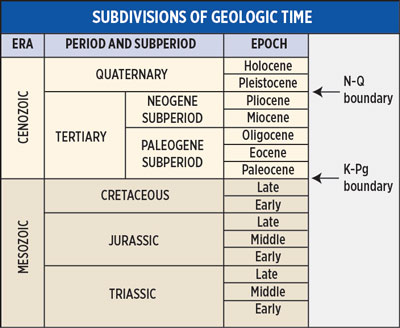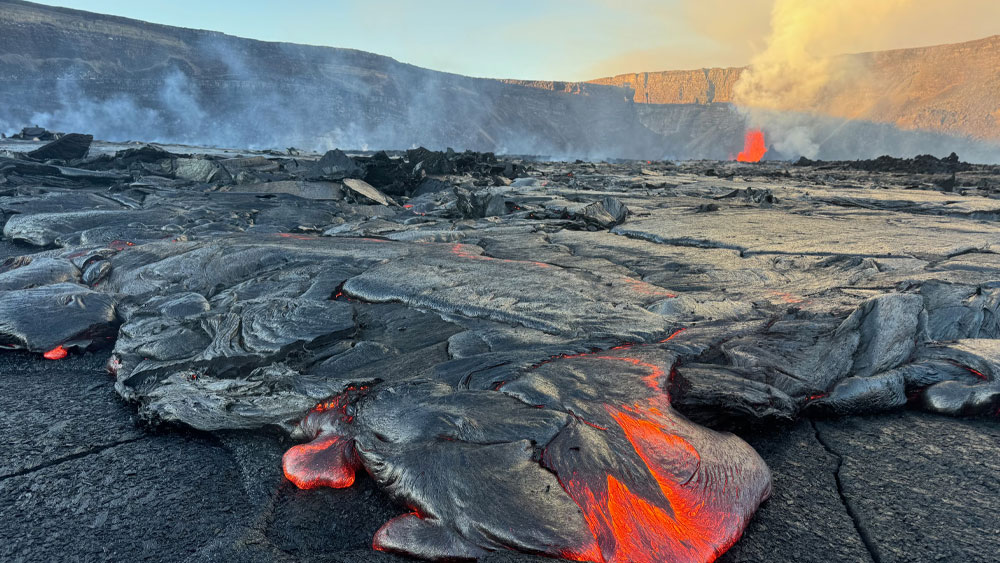Flood geologists have predicted that plate motion slowed at the end of the Flood year, and now conventional scientists are finding it to be true. A recent study by Colleen Dalton and her colleagues from Brown University in Providence, RI, found that ocean crust production slowed by 35% from 15–6 million years ago, or late in the Tertiary.1 Although we dispute these great ages, the data still indicate a slowdown in plate movement occurred exactly when predicted, coinciding with the end of the Flood.2 And this slowdown was global, with 15 of 18 ocean ridges slowing at this same time.1
The best mechanism for the Flood is catastrophic plate tectonics, proposed by Dr. John Baumgardner and others in 1994.2 Specifically, he suggested that runaway subduction was the driving force for the rapid plate motion before its slowdown. And in an earlier study, Dalton and her team concluded that slab pull was “responsible for 60-70% of the force on subducted slabs.”3 As the slabs of the seafloor sank into the mantle, new seafloor was created at the adjacent ocean ridges.
Baumgardner points out that the cold pre-Flood seafloor was completely and rapidly consumed during the yearlong event and was rapidly replaced with today’s hotter, young igneous ocean seafloor. He explains,
In regard to the fate of the pre-Flood seafloor, there is strong observational support in global seismic tomography models for cold, dense material near the base of the lower mantle in a belt surrounding the present Pacific Ocean.4
He suggests that during the Flood cold plates were rapidly pulled down into the mantle, causing a thermal frictional envelope to develop around them by reducing viscosity (fluid-like thickness) in the mantle and “resulting in a sinking rate . . . higher than would occur otherwise.”4 Baumgardner found that once the older, colder, originally created oceanic crust and lithosphere began to subduct, it would speed up and drop into the less-dense hot mantle like a fishing weight in water. He referred to this as runaway subduction.4 He suggested that the rates of movement were meters per second, not centimeters per year as conventional scientists like to suggest.
It was the higher density of the heavy, cold, original ocean seafloor that allowed the runaway subduction process to begin and continue. The high density material served essentially as the fuel. Baumgardner described it as “gravitational energy driving the motion” of the plates.5 The runaway process continued until the original, created oceanic lithosphere was totally consumed. In other words, the Flood continued until the newer, more buoyant seafloor could no longer subduct because it was too buoyant. This, brought plate motion and the production of new seafloor at ocean ridges to a virtual standstill. And without new seafloor pushing the water upward, the flooding of the continents ceased, ending the Flood. Because of this, today’s plate motions shift only a few centimeters per year.
And this is exactly what Dalton and her team found. They found global evidence that the plates did, in fact, slow their motion all at the same time. Furthermore, they found that this slowdown happened abruptly, writing, “Here, we document spreading-rate reductions that are nearly global and relatively fast, in many cases >20% over 5 Myr [million years] or less.”3
Obviously, we disagree with the deep-time paradigm used in these studies. But ICR’s current model of a progressive Flood is strongly supported by this new evidence. As previously mentioned, Dalton’s team found that seafloor production slowed significantly in the late Tertiary, and we had previously suggested that the Flood didn’t end in the geologic record until late in the Tertiary (or Tejas Megasequence), just before the Ice Age.6
Additionally, this new discovery supports our interpretation of a high Cenozoic end of the Flood, which we call the N-Q (Neogene-Quaternary), because it was at this level in the rock record when new ocean seafloor nearly ceased forming across the globe. Without the formation of new seafloor, the flooding of the land would have ceased, ending the Flood.6 Simply put, when subduction slowed globally, the production of new seafloor at the ridges also slowed. It’s no surprise this occurred abruptly and globally since they are linked, cause and effect.3 And this is exactly what our model suggested.6

ICR’s Flood model suggests that the floodwaters peaked near the end of the Cretaceous (top of the Zuni Megasequence) and began to recede during the Tertiary (or Tejas Megasequence). The cooling of newly created seafloor later in the Flood year caused the ocean floor to sink and the floodwaters to be drawn back into the ocean basins. Catastrophic plate motion continued throughout the Tertiary, until all of the original seafloor was completely consumed, causing the plates to abruptly slow to today’s rates. These two recent studies appear to document the very moment when the plates slowed.1,3
Dalton and her team of researchers unknowingly found evidence to support the catastrophic plate tectonics model.1,3 Sometimes data simply speak for itself. Scientific evidence continues to stack up in support of biblical truth. The rocks don’t lie!
References
- Dalton, C. A. et al. 2025. Consequences of a Global Slowdown in Seafloor Spreading for Sea Level and Mantle Heat Loss. Geochemistry, Geophysics, Geosystems. 26 (2).
- Austin, S. A. et al. 1994. Catastrophic Plate Tectonics: A Global Flood Model of Earth History. Proceedings of the International Conference on Creationism. 3, article 56: 609–622.
- Dalton, C. A., D. S. Wilson, and T. D. Herbert. 2022. Evidence for a Global Slowdown in Seafloor Spreading since 15 Ma. Geophysical Research Letters. 49 (6).
- Baumgardner, J. 1994. Runaway Subduction as the Driving Mechanism for the Genesis Flood. Proceedings of the International Conference on Creationism. 3, article 14: 63–75.
- Baumgardner, J. 2018. Numerical Modeling of the Large-Scale Erosion, Sediment Transport, and Deposition Processes of the Genesis Flood. Answers Research Journal 11: 149–170.
- Clarey, T. 2020. Carved in Stone: Geological Evidence of the Worldwide Flood. Dallas, TX: The Institute for Creation Research.
*Dr. Clarey is the director of research at the Institute for Creation Research and earned his doctorate in geology from Western Michigan University.






















